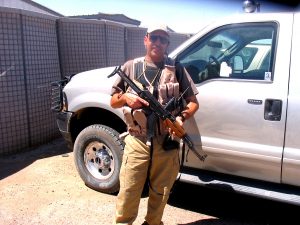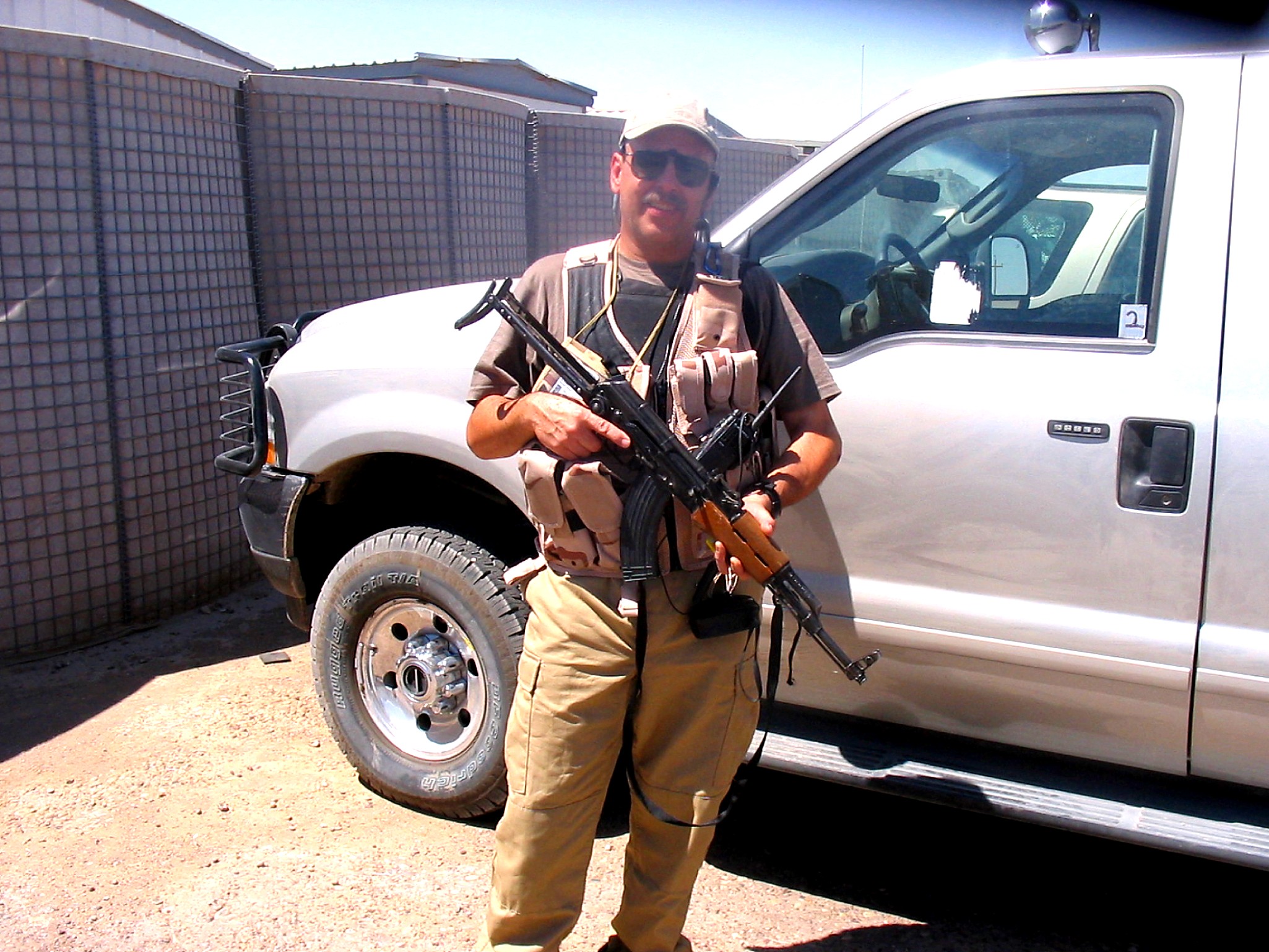Kelly: I’m thrilled to introduce Mike McMaken, a regular Self-Reliance Central reader and all-round good guy. Mike is a US Army veteran with over 30 years of military, law enforcement and private security experience. He spent two and a half years as a security contractor in Iraq and has made numerous trips to many of the world’s most challenging places. He has a Masters Degree in Behavioral Science and is an expert in Hostile Environment Awareness Training, or HEAT. He has kindly agreed to share the fruits of his wisdom with us and today he’s covering topics that can be applied to normal activities of everyday life, such as traveling. Look forward to many more articles, hopefully some videos — and if anyone is interested, some training sessions.
 MIKE: Generally, HEAT training is given people who are being sent to high risk regions or active conflict zones. HEAT courses can range from a few hours in a classroom to cover the basics, through to multiple day courses that include harsh field training with complex scenarios and professional role players.
MIKE: Generally, HEAT training is given people who are being sent to high risk regions or active conflict zones. HEAT courses can range from a few hours in a classroom to cover the basics, through to multiple day courses that include harsh field training with complex scenarios and professional role players.
Over the years I’ve provided training that included carjacking survival, advanced first aid, active shooter, and surviving abductions complete with the ‘victims’ who suddenly find themselves in wire ties with bags over their heads. While this all sounds very cool, one might ask how this kind of training can be applied to everyday life in the average U.S. town?
Because our towns hold threats. Muggers, terrorists, carjackers, kidnappers, rapists and murderers don’t limit themselves to war zones and dangerous city hoods. They can be anywhere. So, planning for the worst is just plain old commonsense.
I’m going to take you through some HEAT topics that are applicable to everyday life in America. But remember to use it. Don’t be this person.
“I remember a seasoned international development worker who was sent to the Democratic Republic of the Congo for three weeks to tour medical clinics in the bush. She did fine and completed her assignment with no serious problems . . . until she got home. She drove to her home and pulled into her garage, shut off the engine and got out of the car before closing her garage door. Three men rushed into the garage and physically attacked and robbed her. In a HEAT course you are taught to never unlock your car door or get out unless you are absolutely certain you are in a secure area, but she was complacent after successfully completing her challenging assignment in Africa and forgot that. Fortunately, she came out of the experience with only a few bruises, but it illustrates a critical concept . . . complacency can kill you.”
The Seven Ps for Road Trips
There is an Army adage that says Prior Planning and Preparation Prevents Piss Poor Performance. A key component of HEAT courses is to plan ahead for whatever it is you are doing. This includes trip planning that takes into considerations things like routes, time of travel, arrival time, conditions at the start and destination points, traveling conditions, etc. It also applies to having a plan in the event of a crisis, no matter what kind of crisis it is.
Research on crisis events such as terrorist attacks, crimes or even automobile accidents indicate that when a crisis hits it is the people who have thought ahead and have a plan who spring into action while everyone else is standing around wringing their hands and saying, “Oh, my God, I can’t believe this is happening.” The Army teaches its officers that making a decision and doing something, even if it is the wrong thing, is better than doing nothing at all. The point is to teach them not to be paralyzed by indecision. The same thing is a key component of HEAT.
Whether you are preparing to go on a long trip or across town, go out to a restaurant or go to a movie, make a plan. Know when and where not to travel, know the layout of whatever venue you are going to and have a plan ahead of time of what you will do if something happens.
Hotels
How you choose a room depends a lot on how many floors the hotel has. A typical Days Inn will probably only have a couple of floors, but a Hilton may have 15. In general, it’s best to try not to get a room on the ground floor as it makes your room a more attractive target to criminals who want to get in and out of a room fast if they are stealing something and are also more accessible from the parking lot and make you a more inviting victim if you are out buying a soda or getting ice. If the hotel has multiple floors, try not to be above the third floor as it makes it more difficult to get out in the event of a fire, especially if the hall is blocked and you have to be rescued with a fire ladder.
Ensure you know the layout of the hotel fire escapes and can find them in the dark (or heavy smoke). Always have a flashlight and keep your shoes where you can grab them quickly. If you are trapped in your room, wet some bedding to stuff under the door to help block smoke, fill your bathtub with water so you can use it to cool yourself, the walls and door, and open or break your window and hang a sheet out of it so firefighters know you are in there.
Never rely on door locks. Hotel staff can bypass the locks, and the security latches are often not strong enough to withstand a good kick. Throw a little rubber doorstop in your bag, the kind everyone uses to keep a door open, so that you can jam it under the door at night when you go to bed. You’d be surprised how well they keep a door from opening.
Simple Personal Safety Measures
Some of the recommendations made in HEAT courses are so simple you wonder why they are even included, but it can be surprising what people don’t think of. For example, most people do not carry a flashlight with them or keep one in their hotel room when traveling. (I always have a whistle and flashlight with me to let people find me through sound in case of smoke or building collapse. Kelly) Power failures, storms, and fires can happen in any hotel or other establishment, and a flashlight in a dark and unfamiliar space could save your life.
Another critical item is a solar charger for your phone. They are inexpensive, compact, and can be a lifesaver if you find yourself in a situation where your phone is dead, and you need to call for help.
A pocket knife or multi tool are also smart items to carry wherever you go. Just be sure to know where it is if you are going to go through a security point with a metal detector. You don’t need the drama or to have your tool confiscated if the alarm goes off.
